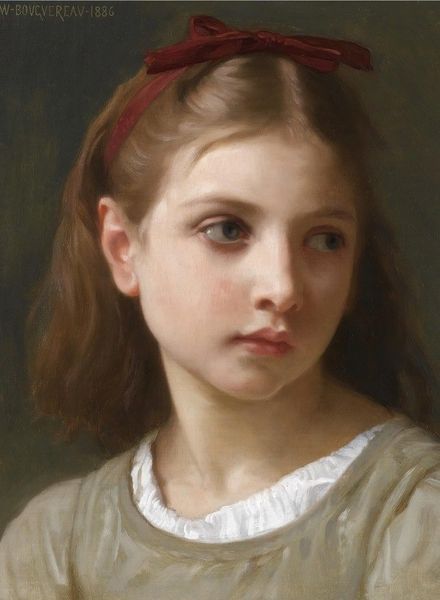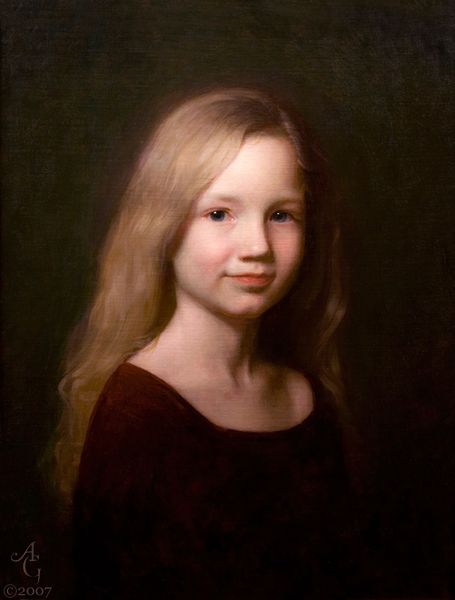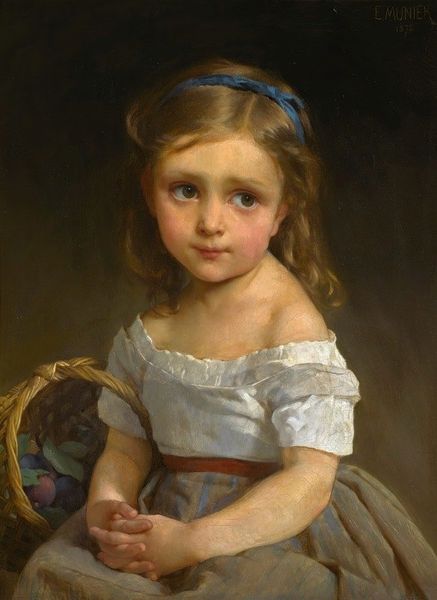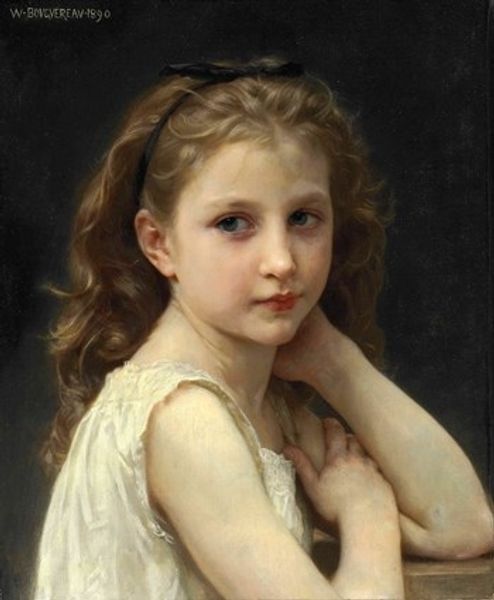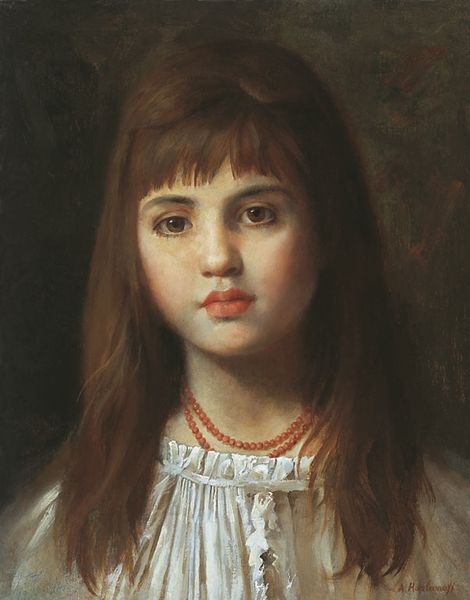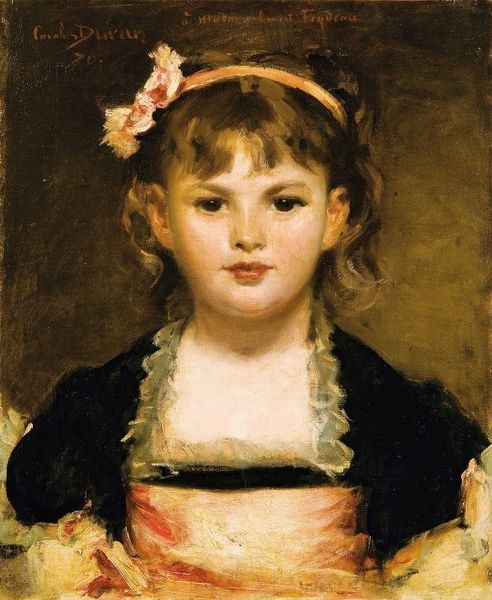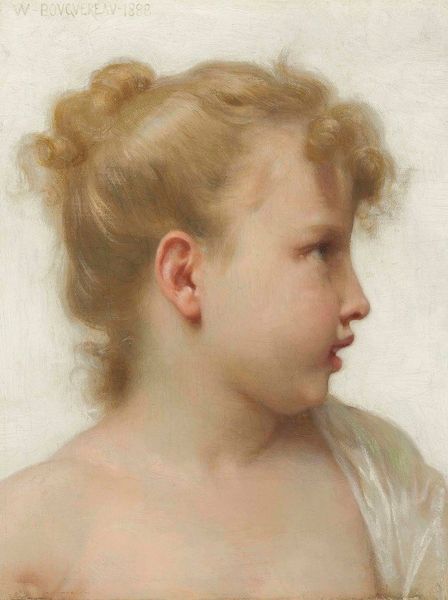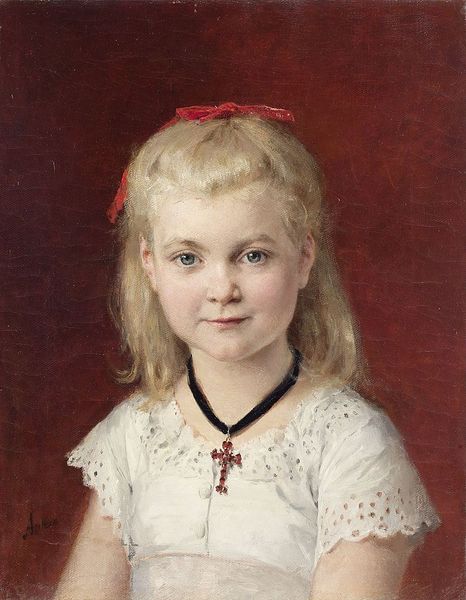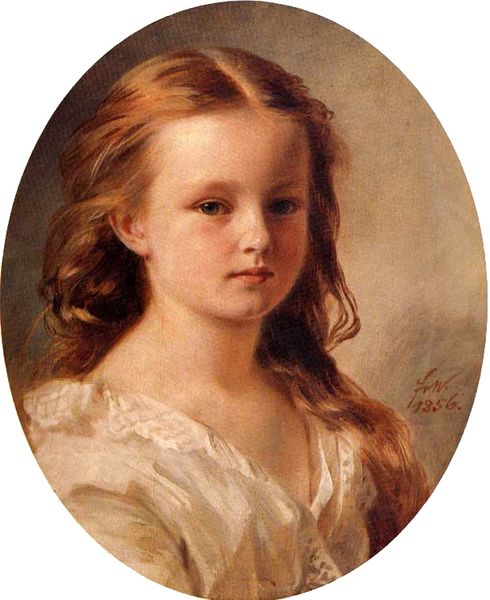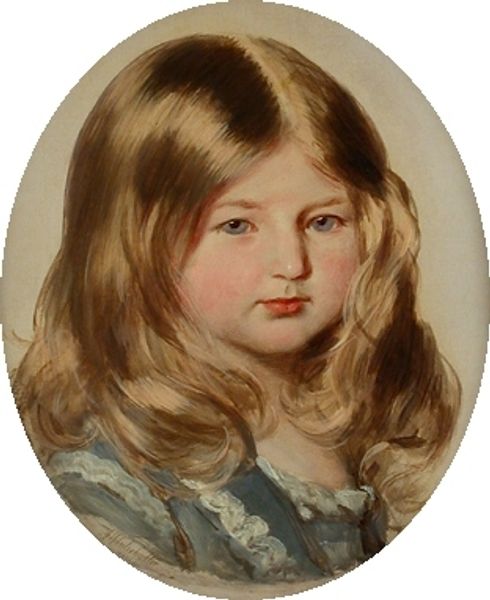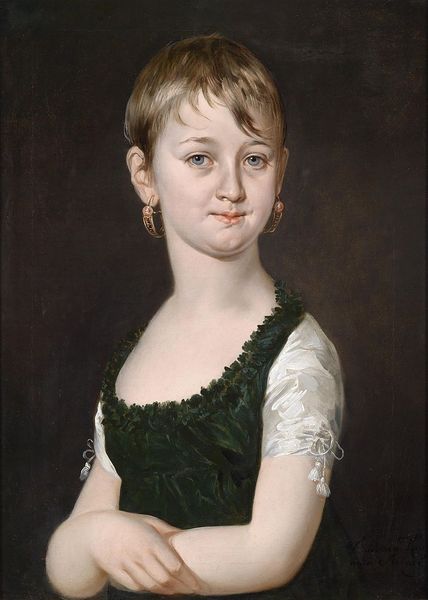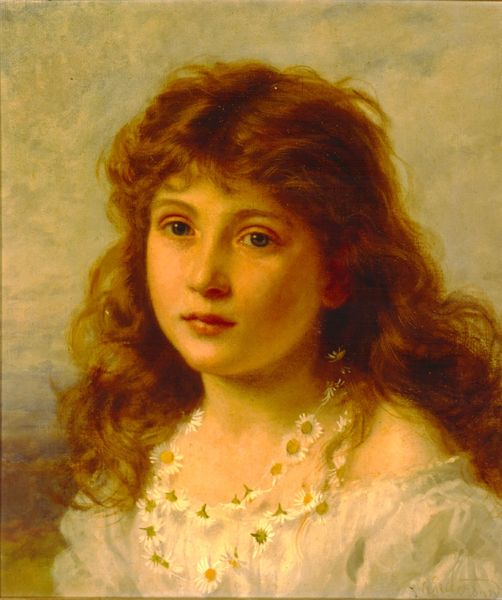
painting
portrait
neoclacissism
low key portrait
face
portrait image
portrait
painting
portrait subject
figuration
portrait reference
child
portrait head and shoulder
facial portrait
academic-art
lady
portrait art
fine art portrait
celebrity portrait
Copyright: Public domain
Curator: Looking at "The Artist's Daughter" now residing at the Musée Calvet in Avignon. What strikes you immediately about this piece? Editor: The overwhelming innocence, it's a potent mix of fragility and formality that gives me pause. The young girl's direct gaze contrasts with the ethereal background. It seems to ask questions about representation itself, almost hinting at the limited roles society envisioned for women, even in childhood. Curator: Indeed. When contextualizing Guerin's practice within the broader history of Neoclassicism and academic art, you see the pursuit of idealized beauty through portraiture, a representation intended to uphold certain cultural values. Editor: Do you think the portrait can be read as an exercise of patriarchal control where, perhaps, a father is visually constructing his daughter's identity, imposing a code of idealised, yet compliant, femininity? I wonder about how her own subjectivity is negotiated here. The rosy cheeks and simple white dress… aren't those loaded signs? Curator: I understand your points entirely and they are quite salient. While the formal language adheres to the codes of idealized portraiture that reinforced power structures, we should avoid imposing purely negative interpretation. Isn't there also an element of genuine paternal affection here, a desire to immortalize his daughter in a style celebrated at the time? After all, her clothing may mirror the Empire/Directoire styles of the time which valued the ideal of naturalness in their own ways, by using sheer white muslin. Editor: Maybe, but that reading flattens other possibilities that acknowledge the gender dynamics involved in artistic representation. By resisting the image as mere 'affection', we instead engage with its multiple, often contradictory, meanings. Think about who gets to create representations, who is seen, and for what purposes! It allows to speak more generally to questions of gender, visibility and the gaze. Curator: Thank you, that helps in moving beyond surface appearances. Considering social power helps refine the overall appreciation of 19th-century portraits. It brings new insights when contextualizing the work today!
Comments
No comments
Be the first to comment and join the conversation on the ultimate creative platform.
